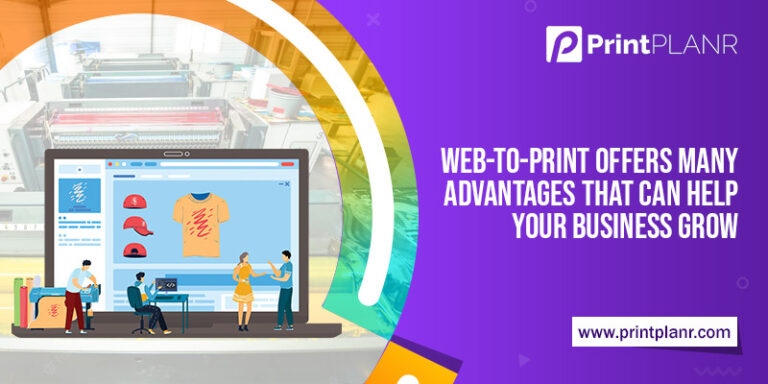In the current fast-paced digital landscape, printing enterprises are searching for new solutions to optimize their operations and fulfill the growing needs of their customers. Leading the way is web-to-print technology, which is changing the way printing businesses oversee their print orders as well as customer interactions. This advancement not only enhances the ordering process while also allows for incredible levels of customization as well as personalization, ensuring that clients obtain exactly what they imagine.
As we delve deeper into the world of web-to-print tools, we will examine how these solutions are transforming the print industry. From enhanced order management as well as workflow efficiency to superior customer experiences, the benefits are significant. We will also compare web-to-print software with traditional printing methods, which will aid you in understand the fundamental differences as well as advantages. If you are a small print shop looking to scale or a large company in need of robust printing solutions, grasping these tools can have a major effect on your success in the competitive print market.
Grasping Online Printing Solutions
Online printing solutions is a robust instrument that allows companies to provide digital print services straight to their customers. This innovation allows users to tailor print products through an web-based platform, providing a seamless fusion of online commerce and printing solutions. By utilizing web-to-print services, printing companies can simplify their processes, control requests more efficiently, and enhance customer interaction through tailored options. This advancement is changing the traditional printing model, moving the emphasis from face-to-face interactions to online platforms.
One of the core benefits of web-to-print software is its ability to simplify various stages of the print process. From https://www.hexicomsoftware.com/web2print/ to completion, these solutions greatly minimize manual mistakes and delays, causing enhanced efficiency. In addition to automating workflows, web-to-print software also enables live collaboration between clients and printing companies, allowing for a more interactive and pleasurable interaction. This interaction assists cultivate customer trust and encourages recurring sales.
In addition, as the e-commerce sector continues to evolve, the requirement for online printing services is on the upswing. Organizations that adopt this technology can deliver a broader variety of products while providing users with the capability to customize their requests easily. This not only caters to the growing trend of customization but also makes sure that printing companies remain competitive in an ever-changing industry. By comprehending the fundamentals of web-to-print solutions, organizations can make informed choices about integrating these solutions into their operations.
The Impact of Digital Print Systems on the Print Industry
Web-to-print solutions are fundamentally transforming the print industry by simplifying how businesses manage their printing demands. Traditionally, print orders were often cumbersome, requiring significant interaction between customers and print shops. With the introduction of web-to-print software, users can now quickly submit orders over the internet, personalize products in instantaneously, and access a range of templates and design resources. This shift not only enhances the user engagement but also reduces turnaround times, enabling printing companies to complete orders more swiftly.
Furthermore, online print solutions is fostering increased customization within the print sector. Businesses can offer dynamic data printing, allowing customers to customize their orders down to singular elements, such as personalized names or pictures. This capability aligns with current market preferences that prefer customized marketing products and services, boosting customer interest and contentment. As a outcome, printing companies that embrace these online tools can set themselves apart in an ever more competitive landscape, responding to different client needs while growing their service offerings.
Finally, digital print solutions is taking a vital part in promoting green practices within the printing industry. By minimizing waste through efficient order management and enabling just-in-time printing, businesses can decrease their ecological footprint. The use of cloud services further enhances sustainability initiatives as they often come with capabilities that improve logistics and resource distribution. As printing companies implement web-to-print technologies, they are not only improving operational performance but also adding to a eco-friendlier future in the print industry.
Choosing and Deploying the Appropriate Web-to-Print System

Determining the suitable web-to-print solution necessitates thorough evaluation of your operational goals and goals. Commence by reviewing the specific requirements of your print shop, including the products you provide, the amount of printing requests, and your target market. Assess multiple software solutions based on key characteristics like the ability to customize, ease of use, and connections with existing systems. It is essential to choose a platform that not just meets your existing demands but is also adaptable for future expansion.
Once you’ve selected a suitable web-to-print system, the integration process is critical for securing effective adoption. Commence by developing a thorough plan that outlines the steps for adopting the new system into your workflows. Engage your team in the shift to make sure they are proficient with the updated tools and procedures. Instruction is crucial; consider providing thorough sessions to enable your staff learn how to use the software properly, maximizing its capabilities to streamline processes.
Lastly, continuously monitor and review the effectiveness of the web-to-print system post-integration. Collect responses from both customers and team members to highlight any areas for enhancement. Regular updates and modifications may be necessary to adjust the solution with changing market demands or market trends. By committing to ongoing evaluation and refinement, you can improve your web-to-print solution for the most favorable results, leading in increased efficiency and user happiness.
